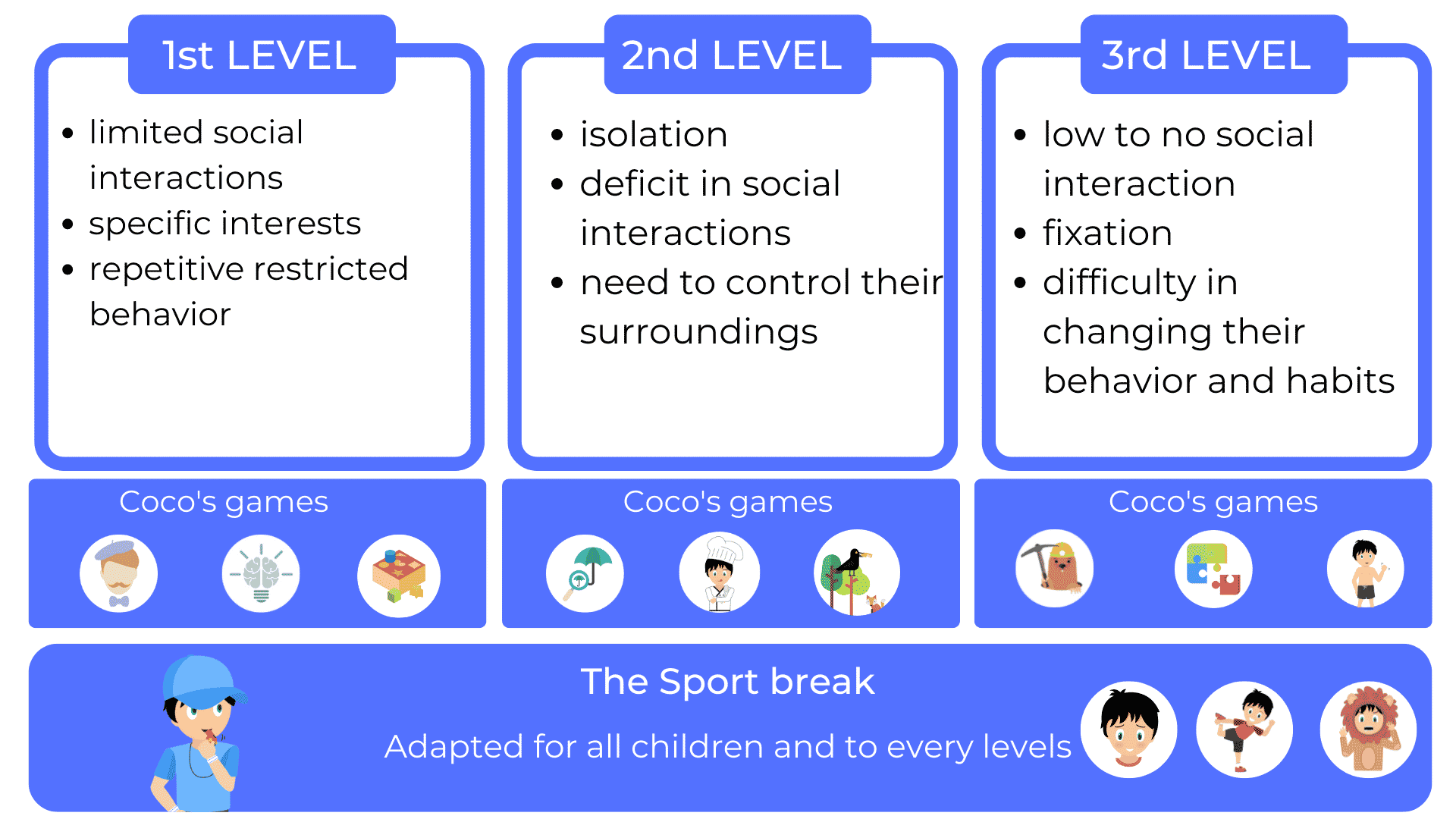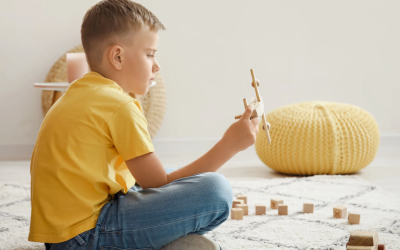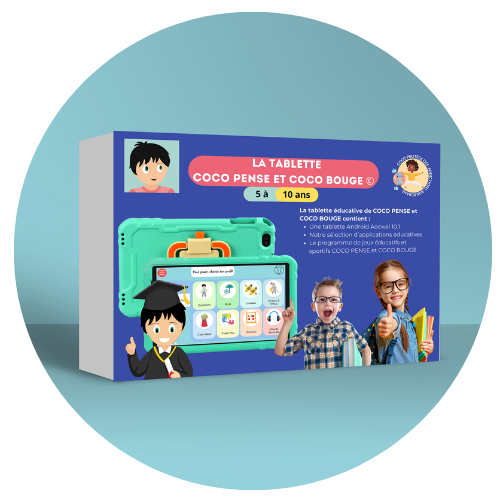Autism is a neurodevelopmental disorder that affects communication, social interaction and behavior. Children with autism can face specific challenges when it comes to participating in sports activities. However, it’s important to stress that sport can offer many benefits to children with autism, both physically and socially and emotionally. In this article, we’ll look at the importance of sports activities for children with autism and give practical advice on how to encourage their participation.
The importance of sports activities for autistic children
Sports activities offer many advantages for autistic children. As well as the obvious physical benefits, they also promote social, emotional and cognitive development. When they take part in sports activities, autistic children have the opportunity to socialize, boost their self-confidence, improve their motor coordination and develop their concentration.
Sports activities can also help autistic children improve their communication and social interaction skills. By participating in teams or sports groups, autistic children learn to work as a team, follow rules, communicate with their peers and develop problem-solving skills.
Encouraging autistic children to take part in sports activities
Encouraging autistic children to take part in sports activities may require adjustments and adaptations to meet their specific needs. Here are a few practical tips to help you get involved:
Choose suitable activities
When selecting sports activities for your autistic child, prioritize options that align with their abilities, interests, and developmental needs. Opt for activities that offer opportunities for social engagement, motor skill development, and enhanced concentration. For instance, swimming provides a full-body workout while promoting sensory integration and water safety skills. Cycling offers a fun way to improve balance, coordination, and spatial awareness. Karate emphasizes discipline, focus, and self-control, fostering physical and emotional resilience. Yoga combines movement, breathing exercises, and relaxation techniques to promote mindfulness and stress relief. Soccer encourages teamwork, communication, and strategic thinking on the field. By exploring a variety of sports activities, you can identify those that resonate most with your child’s strengths and preferences, fostering their overall well-being and enjoyment of physical activity.

Create a favorable environment
To create an environment conducive to the participation of your autistic child in sports activities, it’s essential to consider various factors that contribute to their comfort and engagement.
- Start by ensuring that the designated area where sports activities take place is not only calm and well-organized but also free from excessive distractions that could overwhelm or overstimulate your child. For example, if your child is sensitive to loud noises, choose a venue with minimal background noise or provide noise-canceling headphones to mitigate auditory distractions.
- Additionally, consider the layout and design of the space to optimize accessibility and safety for your child. Clear pathways, designated areas for different activities, and visual cues such as colorful markers or signage can help your child navigate the environment more easily and independently. For instance, if your child struggles with spatial awareness, clearly delineated boundaries or designated zones for specific activities can provide structure and clarity.
- Furthermore, proactive communication with coaches, teachers, or activity leaders is crucial to ensure that they understand your child’s unique needs and can provide appropriate support and accommodation. Take the time to discuss your child’s strengths, challenges, and preferences with these individuals, and collaborate on strategies to promote inclusion and participation. For example, if your child requires breaks or sensory accommodations during activities, work together to establish a plan that allows them to participate fully while respecting their individual needs.
By fostering a supportive and inclusive environment through proactive communication, thoughtful planning, and collaboration with coaches and activity leaders, you can create a space where your autistic child feels valued, supported, and empowered to engage in sports activities to the fullest extent possible.
Use visual aids
To enhance the participation of children with autism in sporting activities, incorporating visual aids can be highly beneficial in facilitating their understanding of instructions and routines. Utilizing pictures, pictograms, or diagrams to illustrate the rules of the game, the sequence of steps to follow, or the specific exercises to perform can provide visual support that reinforces comprehension and promotes predictability.
- For instance, you can create visual schedules or cue cards that outline the various stages of a sports activity, from warm-up exercises to cool-down routines. These visual aids serve as tangible guides that help children with autism navigate the structure of the activity and anticipate what will happen next, reducing uncertainty and anxiety.
- Moreover, visual aids can be tailored to accommodate individual preferences and learning styles, allowing children with autism to engage with the material in a way that resonates with them. Whether through colorful pictures, simple illustrations, or symbol-based communication systems like PECS (Picture Exchange Communication System), visual supports offer a means of communication and understanding that transcends language barriers.
By incorporating visual aids into sporting activities, coaches, teachers, and activity leaders can create inclusive environments that promote understanding, participation, and enjoyment for children with autism. These visual supports not only enhance comprehension but also empower children to actively engage in sports activities with confidence and independence.
Promote inclusion and awareness
Encourage inclusivity within sports teams by initiating conversations with coaches, teachers, and fellow teammates about autism. Educate them on the unique needs and challenges faced by individuals with autism spectrum disorder (ASD) and provide practical strategies for supporting your child’s participation. For example, you could suggest implementing visual schedules or social stories to help your child understand game rules and routines. Additionally, advocate for small accommodations, such as providing a quiet space for your child to retreat to if they become overwhelmed during practice or games. By fostering a culture of acceptance and understanding, you create an environment where all children feel valued and included, regardless of their differences.

The benefits of sport for autistic children
Sports activities offer many benefits to autistic children, both physically and psychologically. Here are some of the most notable benefits:
- Developing motor skills: Sports activities help improve motor coordination, balance, muscle strength and body control.
- Reducing stress and anxiety: Sport provides an emotional outlet, allowing autistic children to release energy and reduce stress and anxiety.
- Improved social skills: Taking part in sports activities encourages social interaction, learning about rules, cooperation and respect for others.
- Boosting self-confidence: Sporting achievements help to boost the self-confidence and self-esteem of children with autism, enabling them to set goals and achieve them.
- Development of cognitive skills: Sports activities stimulate the cognitive skills of children with autism, including concentration, planning, problem-solving and decision-making.
Sports activities can play an essential role in the development of autistic children. They offer significant physical, social and emotional benefits, while promoting inclusion and active participation. By choosing appropriate activities, creating a supportive environment, using visual aids and encouraging inclusion, you can help your autistic child reap the full benefits of sport. Remember that every child is unique, so tailor activities to suit their needs and preferences. With your support and a caring approach, your child can flourish and enjoy sports activities to the full.
COCO THINKS and COCO MOVES, educational and sports games
Today, COCO is an application used by autistic children either at home or with a healthcare professional, who may be a speech therapist, occupational therapist, psychologist or psychomotor therapist. All professionals wishing to subscribe to Coco can benefit from a web-based performance tracking platform. It is therefore possible to see the evolution and improvement of people with autism, and thus personalize their care.
Coco goes everywhere with you, because the application doesn’t need Wi-Fi to work, only for updates.
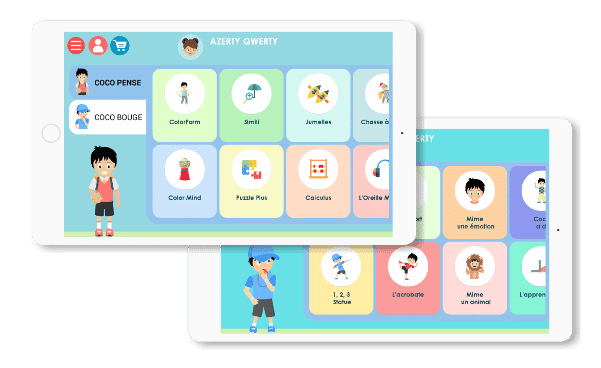
SPORTS BREAKS BENEFIT AUTISTIC CHILDREN
In COCO, you’ll also find physical activities. Every 15 minutes of screen time, the application stops and offers children physical games.
This sports break has many advantages for children, especially those with autism.
Screen use is very useful and loved by children, but prolonged use can become negative. With Coco, children can take a dynamic break, learning to let go of the tablet and engage in physical activity while having fun at the same time.
All our physical activities are designed with children in mind. With balance and dance games, children learn to know their bodies and adapt to their environment. For children with autism, this can be very useful for augmenting known motor patterns and for gaining a better sense of self (especially when there is hypo or hypersensitivity).
In Coco, there’s also the “mime an emotion” game, where the child has to reproduce the emotion shown on screen by Coco. Children can first learn to name emotions, to recognize them in themselves and then in others. What’s more, there’s an audio description in the game that explains the emotion and what you feel in your body.
In our educational application COCO, you can also learn to recognize your emotions with the game “Mime emotions”, in the COCO MOVES section. By clicking on the question mark, you will be able to learn the different emotions in order to better recognize them.
This game to mime emotions is also accessible as a break, every 15 minutes of screen. Every 15 minutes, children are asked to choose a physical activity for an active break. And you can also mime the emotions at that time!
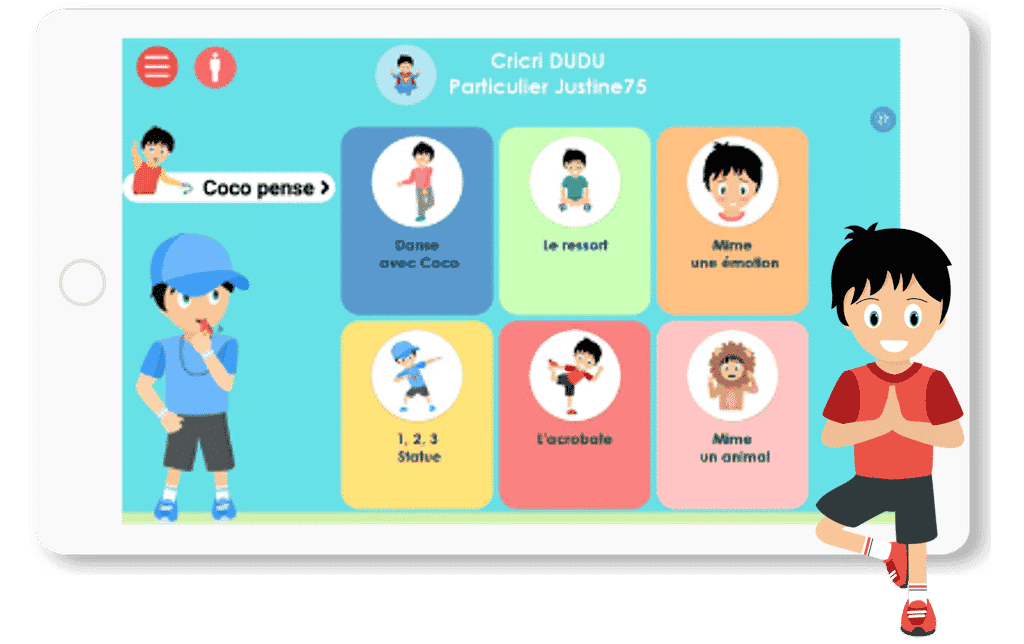
In our educational application COCO, you can also learn to recognize your emotions with the game “Mime emotions”, in the COCO MOVES section. By clicking on the question mark, you will be able to learn the different emotions in order to better recognize them.
This game to mime emotions is also accessible as a break, every 15 minutes of screen. Every 15 minutes, children are asked to choose a physical activity for an active break. And you can also mime the emotions at that time!
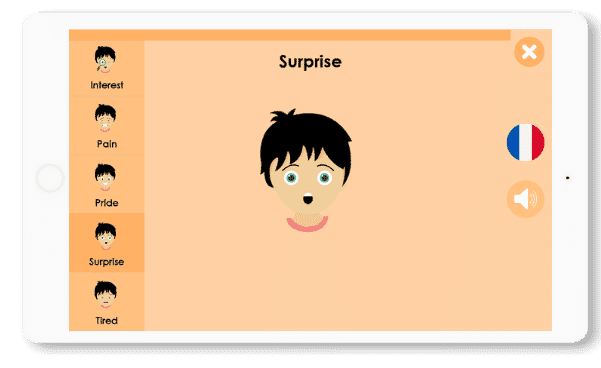
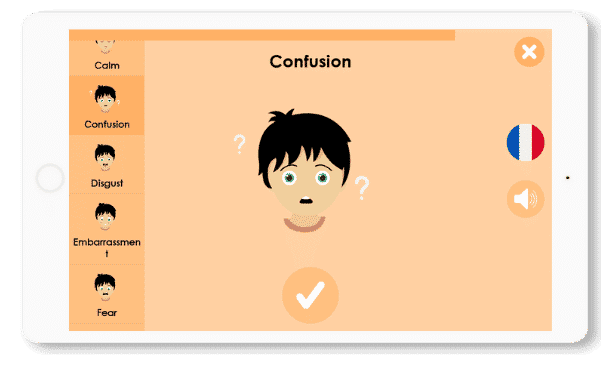
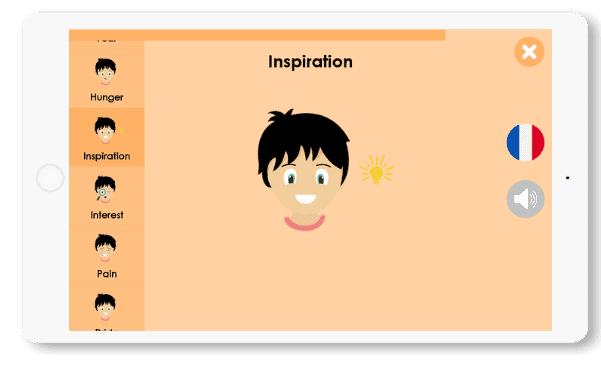
THE SURPRISE
Surprise means that you are surprised by a moment, a person or an object. Like an unexpected gift!
When you are surprised, you open your mouth and eyes wide.
THE CONFUSION
Confusion is being lost in our ideas because of an event for example. It is possible to make a mistake about the name of someone or something.
To mimic confusion, open your eyes wide, make a big “Hoo” with your mouth and raise your eyebrows.
INSPIRATION
Inspiration is the ability of our mind to imagine and create things like drawings, poems, stories.
For inspiration, we’ll squint our eyes, scratch our heads lightly with a smile and pretend to paint, write or draw.
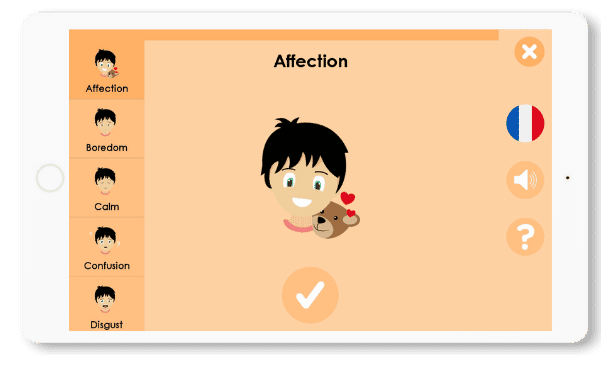
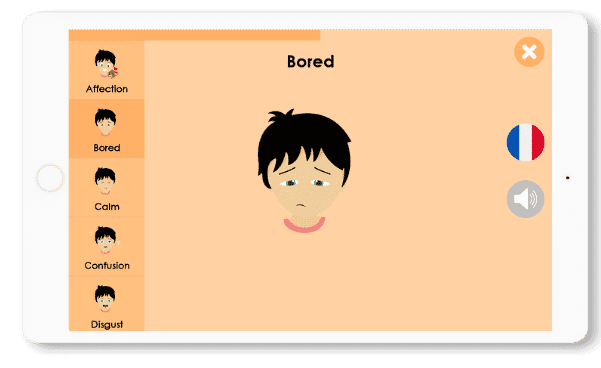
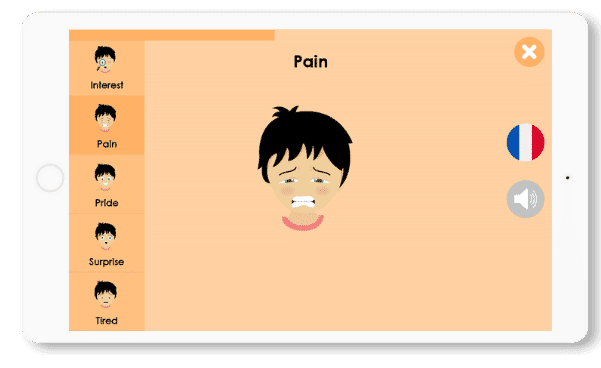
THE AFFECTION
Affection means to be touched, to have positive thoughts for a friend, family member or pet.
Here, we smile, we think about the good times, we can hug, kiss, tell a friend that we like him or her.
.
THE BOREDOM
Boredom is present when we are in a situation that does not interest us. You don’t want to listen to the person in front of you or you don’t want to do anything.
For boredom, we’ll blow hard, look up and look around.
THE PAIN
Pain is an unpleasant sensation that can hurt. It can hurt physically with an accident. Pain can also be a feeling of missing someone or something or sadness.
To express the pain we raise the eyebrows upwards, we bend the eyes and we make a grimace with the face.
Other articles that might interest you:
Using Technology to Enhance Communication in Autism Speech Therapy
Autism Spectrum Disorder (ASD) presents unique challenges in communication, making speech therapy an essential...
Effective Autism Behavior Therapy: Improving Outcomes
Autism is a complex neurodevelopmental disorder that affects individuals in various ways. It is characterized by...
Autism Therapy at Home: Effective Strategies
Autism Spectrum Disorder (ASD) is a neurodevelopmental disorder that affects individuals in various ways. It is...


